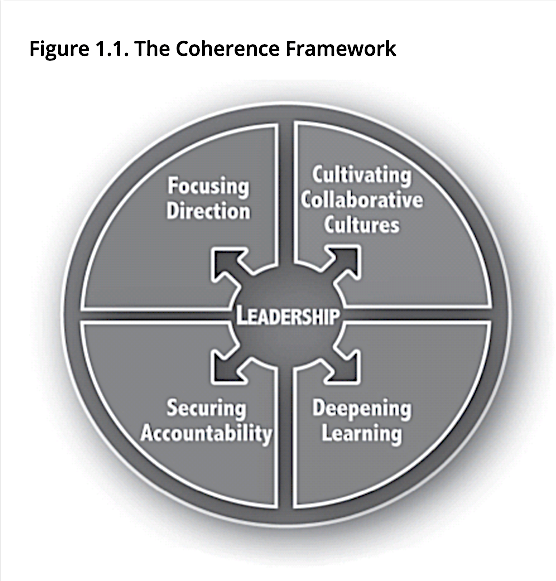 By Stoney M. Beavers
By Stoney M. Beavers
Assistant Director
Alabama Best Practices Center
I’ve held a theory over the past several years that life is proportionately complex to the number of keys on your keyring.
 The Gen X latchkey kids of the 80s, for example, had one key on a string. Life may not have been easy, but it wasn’t always overly complex. As we acquire “stuff,” however, we need keys to that stuff, and life begins to get a little messy.
The Gen X latchkey kids of the 80s, for example, had one key on a string. Life may not have been easy, but it wasn’t always overly complex. As we acquire “stuff,” however, we need keys to that stuff, and life begins to get a little messy.
Then, when we acquire jobs, we get even more keys and have even more to manage. School administrators, whose pockets cannot even contain their keys, sometimes brandish their giant keyrings as a badge of honor, and their lives are often immensely complex.
Michael Fullan and Lyle Kirtman, authors of Coherent School Leadership: Forging Clarity from Complexity (ASCD, 2019), honor this complexity and offer that it can be more manageable within a framework and if approached with a sound set of leadership “competencies.” This book will speak to any educator who has ever thought that “there has to be a better way” or that education is now so complex that educating children has become almost impossible.
 We are excited about the choice of this text for our basis of new learning during the Key Leaders Network for 2020-2021. Finding clarity in a complex education world is a common goal for school leaders, and we should all be able to see how more clarity and focus will have a powerful impact on students and adults alike.
We are excited about the choice of this text for our basis of new learning during the Key Leaders Network for 2020-2021. Finding clarity in a complex education world is a common goal for school leaders, and we should all be able to see how more clarity and focus will have a powerful impact on students and adults alike.
We also believe that exploring this text together as a network will help us make further connections to the text and to the work of colleagues across the state. Friends in our network may be struggling with similar issues and may have already made significant progress toward addressing some of these issues. Together we can learn more, find better solutions, and lead more effectively and efficiently.
More about the book
Fullan and Kirtman explore how ignoring basic management skills has led to a “reactive” educational culture where it is impossible to assume the role of instructional leaders because of the barrage of competing crises that pull us away from this focus. In today’s complex and fragmented world, coherence is not easy to attain, and it is even more difficult to sustain. They explain that the search for coherence is continuous, due to three factors:
- People come and go in an organization,
- The environment or context constantly changes (students and society change), and
- People in organizations get new ideas. (3)
 Any experienced educator who has spent leadership time in a school building can think of dozens of other challenges to coherence. Fullan and Kirtman outline a model for integrating the Coherence Framework (Figure 1.1) with the 7 Competencies for Highly Effective Leaders in order to focus on Implementation and Execution. While they also outline several subskills, the seven basic competencies are demonstrated by a leader who:
Any experienced educator who has spent leadership time in a school building can think of dozens of other challenges to coherence. Fullan and Kirtman outline a model for integrating the Coherence Framework (Figure 1.1) with the 7 Competencies for Highly Effective Leaders in order to focus on Implementation and Execution. While they also outline several subskills, the seven basic competencies are demonstrated by a leader who:
- Challenges the status quo
- Builds trust through clear communication and expectations
- Creates a commonly owned plan for success
- Focuses on team over self
- Has a high sense of urgency for change and sustainable results
- Is committed to continuous improvement of self and the organization
- Builds external networks/partnerships
All of these competencies are definitely worth exploring more, but it is competency seven which has the greatest application to the work of the Alabama Best Practices Center.
In his research, Kirtman found that “principals who focused on instruction inside, and did not connect outside, had poorer results than those who focused inside and buttressed it with specific outside connections” (104). This finding supports years of anecdotal evidence from network participants regarding how the shared learning has maximized their effectiveness in their own districts.
While context and culture may differ from school to school, the need to learn together, share resources and insights, and bounce ideas off colleagues cannot be overemphasized. It is through work like this that we build strong administrative teams and effective leadership in order to deepen learning and sustain the complex mission of improving education for all learners – students and adults.
If you are interested in further exploring these ideas and considering what Leadership for the Future should be, then I highly recommend you read Coherent School Leadership and consider joining the Key Leaders Network in the coming year to share in this new learning with like-minded colleagues from across the state.
Networking and collaboration may not lighten your keyring, but I am confident that together we can learn how to more effectively use our keys to open new doors to learning.
Image credit (keyring): tucson-locksmith.com
Dr. Stoney Beavers recently became the first Assistant Director of the Alabama Best Practices Center. He previously served as Assistant Superintendent of Blount County (AL) Schools for 14 years, after a stint as the district’s Secondary Curriculum Coordinator. During his years in the classroom, Stoney taught English, Spanish and Drama and was named an Alabama Secondary Teacher of the Year and a Milken Award winner.


0 Comments on "Our 2020-21 KLN Focus Book Coherent School Leadership Offers Strategies for Building Coherence in a Complex Education World"